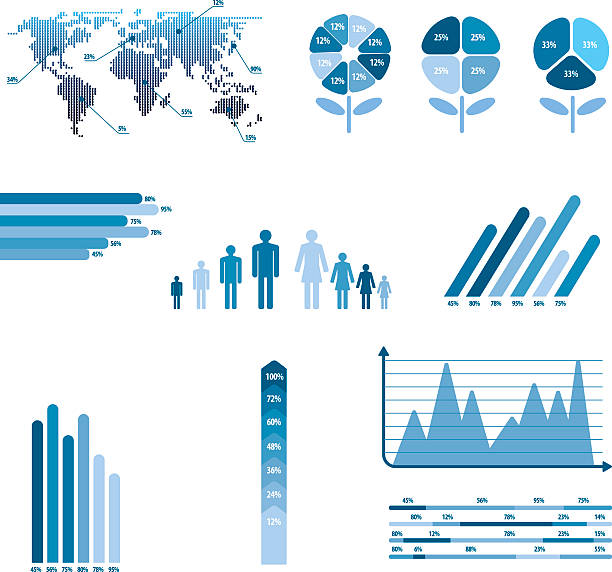Marketers’ ability to reach the right person or business decision-makers has improved significantly in the last two decades. This is due to two factors: the growth of social media and the internet, as well as the willingness of people to share and update huge amounts of personal information on these platforms.
Companies have access to incredibly accurate demographic data that is segmented precisely. This makes it easier to find the people who are most likely to be interested in your products or services.
What are demographics?
The study of demographics involves the analysis of characteristics of individuals or groups within a geographical area. More information is collected, and more groups of people or organizations with similar characteristics can be created.
Understanding what products and services customers can and will afford and want.
Target marketing campaigns more precisely and reduce the cost per sale or lead.
Use PEST Analysis to track how society is changing and how people should adapt.
What is demographic information?
In the past, most demographic data came from a limited number of sources, such as censuses, surveys, and government records. The depth of demographic data collected has increased significantly in recent years due to the growth of search engines and social media platforms.
This data abundance allows businesses to pinpoint consumers in ways they could not do 20 years ago. Google, Facebook, and other online platforms will enable you to find and communicate with any niche group.
You don’t have to advertise on Facebook and Google. You can contact one of the many list owners and brokers that exist in the United States. They purchase subscriber lists for online and print magazines that cover all kinds of interests and then sell them to companies.
You could, for example, purchase an Email Marketing Contact List to promote your new saddles. This list would include horse owners who meet certain criteria, such as age, income, and geographic location.
In recent years, B2B data has become more detailed largely due to these factors:
LinkedIn holds a large volume of data on firms (including hierarchical structures).
You can now find CISOs at law firms with over 100 employees on the West Coast much more easily. You can advertise on LinkedIn or purchase telemarketing to contact them directly and book an appointment.
It is the future of B2B email marketing. Now, companies are sending fewer emails. This is because they get better responses and more qualified leads. The people who receive their emails will most likely need their product or service.
For decades, marketing departments have been fighting against redundancy. This is a waste of marketing dollars because they reach the wrong people. In the last ten years, redundancy has been greatly reduced by the proliferation of demographic data. This means that the cost per lead or sale is lower.
What is demographic segmentation?
The demographic segmentation of companies and people is based on characteristics.
A luxury jewelry company that wants to reach customers in the Northeast can divide the large audience into different categories, such as by state or city (a consumer with a low income may not be able to afford the products of the company).
Segmentation and demographic marketing improve the results of your marketing campaigns and allow you to focus on a more defined and receptive client base.
Five main segments for demographics
Consumer demographics are divided into five segments: age, gender, income, education, and occupation.
Even though focusing on one characteristic of a demographic may be lucrative, aiming for all five could yield a better result. The more clearly defined your target group is, the more likely it will be that they share similar consumer behavior, interests, and needs.
Market segmentation can be further divided into other types
Psychographic Segmentation: This method relies on subjective characteristics such as personality, values and interests, lifestyles, beliefs, motivations, attitudes, and priorities. A payroll software company may use psychographic segmentation to promote its products for business owners who are concerned about Staying tax-compliant in the most efficient way possible.
Geographic segmentation This approach allows you to divide your customers by city, country, ZIP code, weather, location (urban or rural), or proximity. A company that sells electric scooters might segment its market by targeting people in large cities.
Consumer behavior is the focus of this approach. Marketing research is required to determine consumer spending habits and brand interactions. Behavioral segmentation is used by any company that targets customers who have purchased a similar product, either from them or their competitors.
Firmographic Segmentation: This method focuses on companies. Firmographic Segmentation segments companies based on factors like industry, location, and revenue. An energy broker, for example, may target manufacturing and industrial companies as their utility bills will be higher than office-based businesses.
Segmentation of the market: This method is especially helpful for Social Media Marketing. By narrowing your audience for a social media campaign, you can both increase engagement and reduce marketing costs.
Why is demographic information important for marketing?
Knowing the groups that are most likely customers makes it easier to reach them, understand their needs, and offer them a product or service they will enjoy.
Business Plans: Demographics gives you the information that you need to determine your likely target market size for business plans.
Market Research: Identifies the subgroups of consumers who are likely to buy your product or use the service. You might find that groups you expected to be the most interested in your business aren’t as responsive as you had thought. However, groups you thought wouldn’t show much interest may actually be highly responsive.
Image Building: By analyzing the demographics and age of your target market, you can create a logo, branding, and imagery that will appeal to them.
Media Use: Demographics can help you determine the best way to spend your advertising budget. Social media may not work as well for older audiences since the audience tends to be younger. (Though this trend is changing). [Related Article: Social Media Marketing for Older Demographics ]


